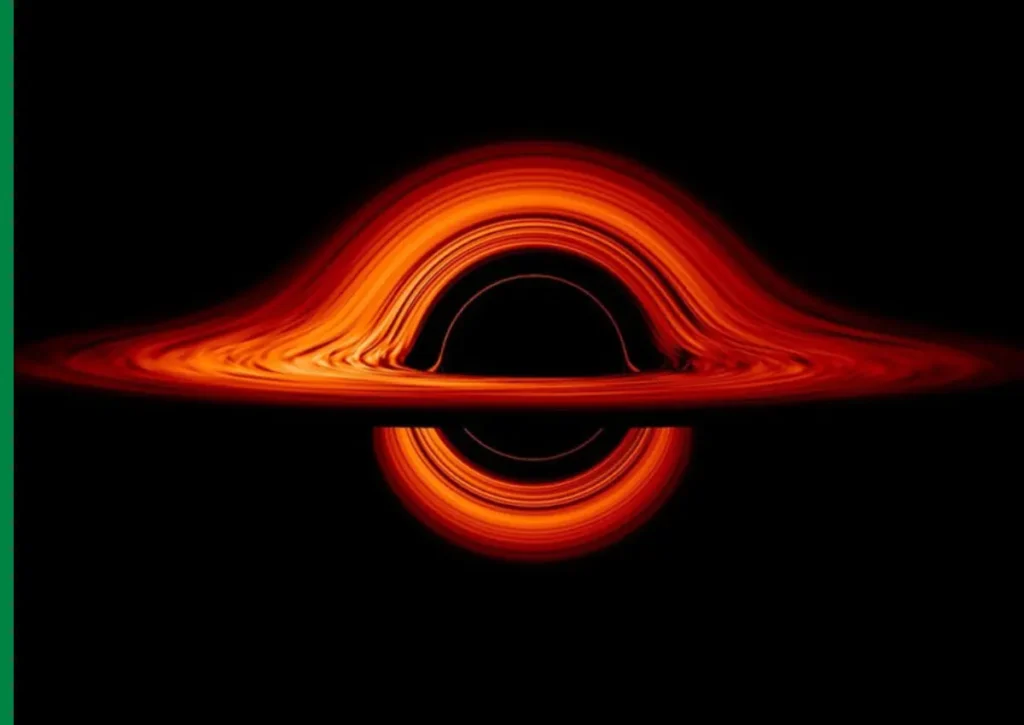Bengaluru, In a remarkable scientific breakthrough, India’s multi-wavelength space observatory AstroSat has detected rapidly evolving high-energy X-ray signals from a spinning black hole system, revealing an unusual pattern never before recorded in such systems.

The observation, made during an intense 13-day monitoring period in September 2023, marks the first time that scientists have witnessed fast-changing high-frequency modulations—known as quasi-periodic oscillations (QPOs)—in hard X-rays emitted from a black hole binary. The discovery provides new insights into the behavior of matter in the region immediately surrounding black holes, a subject that has long fascinated and puzzled astronomers.
The black hole system under observation, known as Swift J1727.8–1613, was first flagged by NASA’s Swift/BAT observatory on August 24, 2023. It quickly became one of the brightest transient sources in the X-ray sky, attracting the attention of space scientists worldwide.
Responding to the alert, India’s AstroSat began observing the system using its Large Area X-ray Proportional Counter (LAXPC) instrument, which is designed to detect X-rays up to 100 keV with high time resolution. From September 2 to September 14, LAXPC captured a series of detailed X-ray measurements across a wide energy band.
What stood out in the data was the discovery of aperiodic modulations in high-energy X-ray photons, something rarely observed in black hole systems. These modulations, or QPOs, were found to evolve rapidly in frequency, rising from 1.4 Hertz to 2.6 Hertz in just seven days—a phenomenon previously unrecorded in such systems.
“This is the first-ever detection of a rapidly evolving QPO signal in the hard X-ray band of a black hole binary system,” said a senior scientist from the Indian Space Research Organisation (ISRO). “It opens a new window into the physics of accretion processes near black holes.”
QPOs are subtle signals buried within the complex noise of X-ray data. They occur when matter spirals into the gravitational field of a black hole, forming an accretion disk. As this matter heats up, it emits X-rays. These X-rays can show periodic flickering patterns, which are believed to be caused by turbulence or oscillations in the inner regions of the disk or surrounding plasma.
Most previously detected QPOs have been relatively stable in frequency and observed primarily in soft (low-energy) X-rays. AstroSat’s detection of a rapidly shifting QPO in the hard X-ray band (3–50 keV) suggests that the modulation originated in a very compact and energetic region, likely close to the black hole’s event horizon.
According to ISRO, approximately 90 percent of the X-ray photons observed during the event were Comptonized photons—meaning they had been scattered by high-energy electrons in the corona, the hot, tenuous region just above the accretion disk. This further supports the theory that the signal originated from the inner accretion flow, where intense gravitational forces dominate.
“This discovery is critical for improving our understanding of how black holes consume matter and how their accretion environments behave over time,” said a researcher associated with the project. “It challenges existing theoretical models that assumed QPO frequencies remain relatively stable during outbursts.”
The findings have been peer-reviewed and published in the Monthly Notices of the Royal Astronomical Society, one of the world’s leading astrophysics journals. The study was led by scientists from ISRO’s UR Rao Satellite Centre in Bengaluru and involved collaboration with researchers from IIT Guwahati, University of Mumbai, and the Tata Institute of Fundamental Research (TIFR).
AstroSat, launched by ISRO in September 2015, is India’s first dedicated astronomy satellite and Asia’s only multi-wavelength space observatory. It has played a crucial role in several high-energy astrophysics studies, thanks to instruments like LAXPC, the Ultraviolet Imaging Telescope (UVIT), and the Soft X-ray Telescope (SXT). This latest discovery adds to its growing reputation in the global scientific community.
“The unique capability of LAXPC to observe fast X-ray variability in the hard band is what made this detection possible,” noted the project team. “There are very few instruments worldwide that can achieve this level of precision.”
Swift J1727.8–1613 will likely continue to be monitored by other space telescopes, including NASA’s NICER observatory and the upcoming Indian mission XPoSat, which is expected to further investigate polarization in X-ray emissions. Scientists hope that more such black hole systems can be tracked in real-time to understand how frequently such rapid X-ray modulations occur.
Black hole binaries—systems where a star orbits a black hole and transfers matter to it—are known for their dramatic behavior, including powerful outbursts, relativistic jets, and intense radiation. However, their inner workings, especially the geometry of the accretion disk and the role of magnetic fields, remain active areas of research.
“This detection is like catching a black hole in the act of rapidly changing its rhythm,” said one of the lead authors. “It tells us that the universe still has secrets to share—and with instruments like AstroSat, we’re better equipped than ever to uncover them.”
As India’s space science capabilities expand, the country is emerging as a significant contributor to global astrophysics. Discoveries like this not only deepen our understanding of cosmic phenomena but also showcase the potential of indigenous space technology.
With more missions in the pipeline and increased international collaboration, India’s role in unraveling the mysteries of the universe continues to grow. AstroSat’s detection of evolving X-ray signals from Swift J1727.8–1613 is just one of many milestones to come.









